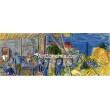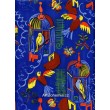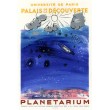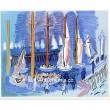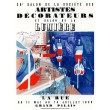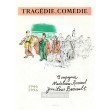Košík
0
x
Produkty
(prázdný)
Žádné díla
Bude determinováno
Dopravné a balné
0 Kč
Celkem
Produkt byl úspěšně přidán do nákupního košíku
Počet
Celkem
0 ks zboží.
1 dílo v košíku.
Za díla:
Doručení a balné:
Bude determinováno
Celkem
Kategorie
- grafiky/tisky
- obrazy
- kresby
- plakáty
- fotografie
- exlibris
- bibliofilie
- knihy/katalogy
- starožitnosti
- sochy/plastiky
- sklo
-
Hnutí
- abstrakce
- art-deco
- čs.avantgarda/moderna
- expresionismus
- fauvismus
- impresionismus
- kubismus
- naivní umění
- op-art
- poetismus
- pop-art
- realismus
- secese
- sociální kritika
- soudobá tvorba
- surrealismus
- světová avantgarda/moderna
- Škola prof. Albína Brunovského
- Škola prof. Zdeňka Sklenáře
- Škola prof.Julia Mařáka - mařákovci
- Žánr
- Zprávy/NEWS
- Doporučujeme
Nová díla
-

Zamilovaný gondoliér
10 406 Kč -

Poryvy
11 374 Kč -

Vír IV
11 374 Kč
-

Bacchanale au hibou, opus 938 (2.12.1959)
13 068 Kč -40% 21 780 Kč
Hnutí
- abstrakce
- art-deco
- čs.avantgarda/moderna
- expresionismus
- fauvismus
- impresionismus
- kubismus
- naivní umění
- op-art
- poetismus
- pop-art
- realismus
- secese
- sociální kritika
- soudobá tvorba
- surrealismus
- světová avantgarda/moderna
- Škola prof. Albína Brunovského
- Škola prof. Zdeňka Sklenáře
- Škola prof.Julia Mařáka - mařákovci
Žánr
NEJŽÁDANĚJŠÍ UMĚLCI
- Anderle Jiří
- Augustovič Peter
- Benca Igor
- Beneš Karel
- Bím Tomáš
- Born Adolf
- Brun Robert
- Brunovský Albín
- Boštík Václav
- Bouda Cyril
- Bouda Jiří
- Braque Georges
- Brázda Jiří
- Buffet Bernard
- Cézanne Paul
- Čapek Josef
- Čápová Hana
- Dalí Salvador
- Demel Karel
- Dudek Josef
- Dufy Raoul
- Effel Jean
- Felix Karol
- Filla Emil
- Giacometti Alberto
- Grosz George
- Chagall Marc
- Istler Josef
- Janeček Ota
- Jiřincová Ludmila
- Kandinsky Wassily
- Kĺúčik Peter
- Komárek Vladimír
- Kulhánek Oldřich
- Kupka František
- Lada Josef
- Lhoták Kamil
- Matisse Henri
- Miró Joan
- Mucha Alfons
- Muzika František
- Picasso Pablo
- Pileček Jindřich
- Reynek Bohuslav
- Sukdolák Pavel
- Suchánek Vladimír
- Svolinský Karel
- Šíma Josef
- Špála Václav
- Švabinský Max
- Švengsbír Jiří
- Tichý František
- Toulouse-Lautrec Henri de
- Toyen
- Trnka Jiří
- Váchal Josef
- Vik Karel
- Warhol Andy
- Zábranský Vlastimil
- Zoubek Olbram
- Zrzavý Jan
Seznam děl umělce Dufy Raoul
(b Le Havre, 3 June 1877; d Forcalquier, Basses-Alpes, 23 March 1953). French painter, printmaker and decorative artist. From the age of 14 he was employed as a book-keeper, but at the same time he developed his innate gift for drawing at evening classes
(b Le Havre, 3 June 1877; d Forcalquier, Basses-Alpes, 23 March 1953). French painter, printmaker and decorative artist. From the age of 14 he was employed as a book-keeper, but at the same time he developed his innate gift for drawing at evening classes at the Ecole des Beaux-Arts in Le Havre,given by the Neo-classical painter Charles Lhuillier (?1824–98). He discovered the work of Eugène Boudin, Poussin and Delacroix, whose Justice of Trajan (1840; Rouen, Mus. B.-A.) was ‘a revelation and certainly one of the most violent impressions’ of his life (Lassaigne, Eng. trans., p. 16). In 1900, with a grant from Le Havre, he joined his friend Othon Friesz in Paris and enrolled at the Ecole Nationale Supérieure des Beaux-Arts in the studio of Léon Bonnat. At the Musée du Louvre he studied the art of Claude Lorrain, to whom he painted several Homages between 1927 and 1947 (e.g. 1927; Nice, Mus. Masséna). His encounter with works by van Gogh at the Galerie Bernheim-Jeune and with Impressionism at Durand-Ruel is reflected in such early works as Beach at St Adresse (1904; Paris, Pompidou).
There are more than 45,000 articles in The Grove Dictionary of Art. To access the rest of this article, including the bibliography, subscribe to www.groveart.com. To find out more about this subject, click on a related article below and subscribe to www.groveart.com
In: http://www.artnet.com/library/02/0239/T023961.asp
Born in Le Havre, France, Raoul Dufy started working at the age of fourteen as a merchant. After graduating from the School of Fine Arts, Dufy met up with some of the leaders in the Fauvist movement and participated in their pictorial quests.
“In this satanic group there are a few chosen ones who will one day confirm their talent” touted the art magazine Le Matin at the beginning of the XXth century. The art critic having written the article turned out to be right.
Dufy’s taste for the outdoors, his use of pure colors extracted directly from the paint tube, and his singular approach to composition shocked more than one person at the time.
Dufy also showed an active interest in decorative art. One of his most famous collaborations was with cloth manufacturer Bianchini-Ferrier as of 1912.
Living respectively in Vence, Sicily and Morocco, Dufy designed the now famous “Electricity Fairy” in 1937 for the Paris World Fair. His love for traveling would take him to New York in 1950.
With a universal intellect, this highly talented designer and engraver succeeded in imposing his original style made of lightness, subtle nuances and vivid colors. His works, filled with radiance and the slightest touch of something airy - almost neglected – coupled with a singular, elegant graphic style all contributed to making Dufy famous the world over.
http://www.operagallery.com/artist/DUFY_440;0;0.aspx
Dufy, Raoul (1877-1953), French painter of lively outdoor scenes. He was born in Le Havre and studied briefly at the École des Beaux-Arts in Paris. Initially Dufy was influenced by the Impressionists, but in 1902 he met Henri Matisse and other Fauvist painters, who worked in striking, nonrealistic colours and bold forms. Dufy adopted their style and added to it a vigorous, spontaneous use of line. Gradually his work became lighter, gayer, more luminous, and more dominated by line. This style was especially effective in watercolour. Dufy's favourite subjects were sailing, horse racing, and other outdoor pursuits at fashionable resorts. He also painted flowers, musical instruments, and nudes.
Dufy did murals, such as those for the Palais de Chaillot in Paris, as well as easel paintings. He won praise for his graphic work, notably the illustrations for Le bestiaire (1911) by Guillaume Apollinaire. Dufy also made woodcuts and designed textiles, tapestries, and ceramics. His brother Jean Dufy, also a painter, worked in a similar style.
In: Ms Encarta
In 1906 Raoul Dufy gained attention as one of the artists exhibiting in the Paris Salon d'Autumne that the critics deemed Fauves (Wild Beasts). He was to enjoy a long and successful career during which he transformed Fauvism's flat, astonishing palette and spontaneous drawing into a personal style filled with wit, lyrical line and sumptuous color. Best known for his themes depicting social settings filled with figures and activity such as horse races, regattas, orchestras and casinos his creativity was in fact boundless.
As with many progressive artists in the early 1900's, Raoul Dufy was fascinated with the works of both Vincent van Gogh and Paul Cezanne who were having large scale retrospective exhibitions in Paris then for the first time. Dufy had an outstanding sense of color honed by designing fabrics for the fashion designer Paul Poiret at Maison Bianchi-Ferier from 1910 onward. One of the key design elements he incorporated into his work from this experience was the concept of layering broad bands of color through- out a composition, adding a sense of depth and drama. Cubism also played a part in Dufy's early development. He worked side by side with Georges Braque in the summer of 1908 in L'Estaque where they both painted landscapes in a Cubist manner. However, by 1913 the height of that movement, Raoul Dufy had already moved on, developing his own personal style. In essence he allowed the white ground of the canvas to unify the painted elements easing the transitions between objects. He created spatial tension by employing varying brushstrokes throughout the composition, and personalized the Fauve palette by adding softer colors such as pale pink, aqua, and yellow. To this mix Dufy also added bold black for heavy accents as he understood van Gogh had done. The oil on canvas titled Sainte-Addresse, 1924, in this exhibition effectively captures these elements of Dufy's mature style, as well as being clearly influenced by Cubism.
In the early 1920's the success of Raoul Dufy's one-man shows with Galerie Bernheim-Jeune, Paris, enabled him to travel extensively to paint. When home in France Dufy divided his time between Vence in the Midi and Saint-Adresse near Le Havre, Normandy, the sight of his childhood on the coast of the English Channel. His travels made the artist keenly aware of the effects of light upon color and he developed his theory of "couleur-lumiere": "Light is the soul of color, without light, color is lifeless."1 Rather then paint what he actually saw, Dufy freely reinvented the scene investing it with tonalities and hues that he formulated subjectively. Traditional perspective was abandoned, distance was often telescoped and objects in the composition appeared in any scale the artist selected.
Following WWII, Dufy elected to spend his time primarily in Vence where he returned to the theme of the nude and the studio, à la Matisse. The spectacular L'atelier de Vence, 1945, oil on canvas seen here, is a tour de force depicting both an exquisite model in the serenely lit and detailed artist's studio as well as a very complete, dramatic landscape outside. A "painting within a painting" handled with complete mastery.
1. Quoted in Dufy by D. Perez-Tibi, p. 134, NY, 1989
In: http://www.georgetownframeshoppe.com/dufy_biography.html
Zobrazit
There are more than 45,000 articles in The Grove Dictionary of Art. To access the rest of this article, including the bibliography, subscribe to www.groveart.com. To find out more about this subject, click on a related article below and subscribe to www.groveart.com
In: http://www.artnet.com/library/02/0239/T023961.asp
Born in Le Havre, France, Raoul Dufy started working at the age of fourteen as a merchant. After graduating from the School of Fine Arts, Dufy met up with some of the leaders in the Fauvist movement and participated in their pictorial quests.
“In this satanic group there are a few chosen ones who will one day confirm their talent” touted the art magazine Le Matin at the beginning of the XXth century. The art critic having written the article turned out to be right.
Dufy’s taste for the outdoors, his use of pure colors extracted directly from the paint tube, and his singular approach to composition shocked more than one person at the time.
Dufy also showed an active interest in decorative art. One of his most famous collaborations was with cloth manufacturer Bianchini-Ferrier as of 1912.
Living respectively in Vence, Sicily and Morocco, Dufy designed the now famous “Electricity Fairy” in 1937 for the Paris World Fair. His love for traveling would take him to New York in 1950.
With a universal intellect, this highly talented designer and engraver succeeded in imposing his original style made of lightness, subtle nuances and vivid colors. His works, filled with radiance and the slightest touch of something airy - almost neglected – coupled with a singular, elegant graphic style all contributed to making Dufy famous the world over.
http://www.operagallery.com/artist/DUFY_440;0;0.aspx
Dufy, Raoul (1877-1953), French painter of lively outdoor scenes. He was born in Le Havre and studied briefly at the École des Beaux-Arts in Paris. Initially Dufy was influenced by the Impressionists, but in 1902 he met Henri Matisse and other Fauvist painters, who worked in striking, nonrealistic colours and bold forms. Dufy adopted their style and added to it a vigorous, spontaneous use of line. Gradually his work became lighter, gayer, more luminous, and more dominated by line. This style was especially effective in watercolour. Dufy's favourite subjects were sailing, horse racing, and other outdoor pursuits at fashionable resorts. He also painted flowers, musical instruments, and nudes.
Dufy did murals, such as those for the Palais de Chaillot in Paris, as well as easel paintings. He won praise for his graphic work, notably the illustrations for Le bestiaire (1911) by Guillaume Apollinaire. Dufy also made woodcuts and designed textiles, tapestries, and ceramics. His brother Jean Dufy, also a painter, worked in a similar style.
In: Ms Encarta
In 1906 Raoul Dufy gained attention as one of the artists exhibiting in the Paris Salon d'Autumne that the critics deemed Fauves (Wild Beasts). He was to enjoy a long and successful career during which he transformed Fauvism's flat, astonishing palette and spontaneous drawing into a personal style filled with wit, lyrical line and sumptuous color. Best known for his themes depicting social settings filled with figures and activity such as horse races, regattas, orchestras and casinos his creativity was in fact boundless.
As with many progressive artists in the early 1900's, Raoul Dufy was fascinated with the works of both Vincent van Gogh and Paul Cezanne who were having large scale retrospective exhibitions in Paris then for the first time. Dufy had an outstanding sense of color honed by designing fabrics for the fashion designer Paul Poiret at Maison Bianchi-Ferier from 1910 onward. One of the key design elements he incorporated into his work from this experience was the concept of layering broad bands of color through- out a composition, adding a sense of depth and drama. Cubism also played a part in Dufy's early development. He worked side by side with Georges Braque in the summer of 1908 in L'Estaque where they both painted landscapes in a Cubist manner. However, by 1913 the height of that movement, Raoul Dufy had already moved on, developing his own personal style. In essence he allowed the white ground of the canvas to unify the painted elements easing the transitions between objects. He created spatial tension by employing varying brushstrokes throughout the composition, and personalized the Fauve palette by adding softer colors such as pale pink, aqua, and yellow. To this mix Dufy also added bold black for heavy accents as he understood van Gogh had done. The oil on canvas titled Sainte-Addresse, 1924, in this exhibition effectively captures these elements of Dufy's mature style, as well as being clearly influenced by Cubism.
In the early 1920's the success of Raoul Dufy's one-man shows with Galerie Bernheim-Jeune, Paris, enabled him to travel extensively to paint. When home in France Dufy divided his time between Vence in the Midi and Saint-Adresse near Le Havre, Normandy, the sight of his childhood on the coast of the English Channel. His travels made the artist keenly aware of the effects of light upon color and he developed his theory of "couleur-lumiere": "Light is the soul of color, without light, color is lifeless."1 Rather then paint what he actually saw, Dufy freely reinvented the scene investing it with tonalities and hues that he formulated subjectively. Traditional perspective was abandoned, distance was often telescoped and objects in the composition appeared in any scale the artist selected.
Following WWII, Dufy elected to spend his time primarily in Vence where he returned to the theme of the nude and the studio, à la Matisse. The spectacular L'atelier de Vence, 1945, oil on canvas seen here, is a tour de force depicting both an exquisite model in the serenely lit and detailed artist's studio as well as a very complete, dramatic landscape outside. A "painting within a painting" handled with complete mastery.
1. Quoted in Dufy by D. Perez-Tibi, p. 134, NY, 1989
In: http://www.georgetownframeshoppe.com/dufy_biography.html
Fotografie
 |  |  |
